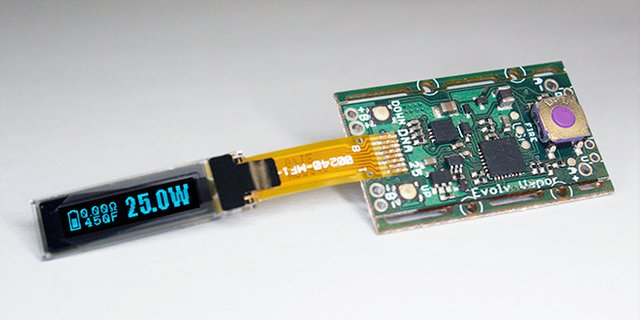Temperature control: the jump to smoke completely safe?

The electronic cigarette has become increasingly popular in recent years as an alternative to the ordinary tobacco cigarette. Many smokers crossed the e-cigarette for the purpose of quitting smoking. Another important group had the hope of eliminating or minimizing the health risks associated with smoking via the electronic cigarette.
There has always been a battle between front and counterparts of the electronic cigarette. We only think of tobacco giants and farms who in the early years tried to stop the advancement of the e-cigarette. 2014 may be considered as the year in which debates about the electronic cigarette became the highlight. One after another (whether or not scientifically substantiated) research that could present negative results regarding the safety of electronic cigarettes was widely spread in the media.
The opponents regrettably, the "carcinogens" slogans often found no more than a storm in a glass of water. Everyday, the electronic cigarette industry succeeded in relativizing or destroying the destructive reports. Ever the rest in the "e-sig" world returned.
Difficult was not. Often, after publication, it became apparent that an investigation was performed incorrectly, that incorrect conclusions were drawn, the business was misinterpretered or there was a third party in the game.
Meanwhile, the electronic cigarette receives massive support from scientists, professors, physicians and just about anyone who has knowledge of this matter. It is like a pole over water that the electronic cigarette is safer than the regular cigarette. The question is "how much" safer?
It is strongly apparent that the many investigations that have been conducted over the past few years have not been for nothing and have contributed to at least one case where both parties agree: the temperature of the coil in the atomizer (the spiral Which is heated to generate vapor) plays a crucial role in the safety of the e-cigarette.
The temperature of the coil determines whether an electronic cigarette is gigantically much safer or just much safer than a regular cigarette.
Degradation of Propylene Glycol (PG) and Vegetable Glycerol (VG)
Propylene Glycol (PG) and Vegetable Glycerol (VG) - the substances that may or may not form the basis of each e-liquid - may degrade at high temperatures. The most famous by-products that are released are formaldehyde and acetaldehyde, both toxic substances.
When he switches to variable voltage or wattage devices, the user runs the theoretical risk of overheating the coils by driving the voltage too high and not adjusting to the resistance of the coil. With standard electronic cigarettes (the mini e-cigarettes or cigarette look-a-likes), this "potential" problem does not occur because the battery delivers a fixed voltage.
In fact, this situation was monitored in a lab (too high voltage in combination with too low resistance) and as a result, formaldehydes and acetaldehydes were released when smoking electronic cigarettes. The basis for a media called under the common denominator "e-cigarette 15 times cancerous than ordinary cigarette".
We therefore have reason for a theoretical risk, because in practice these situations are hardly any. If you take a pull of an e-cigarette whose coil is overheated, you will be faced with a very dirty taste. There is no single damper that will continue smoking at that time. Thus, practitioners are not significantly exposed to situations such as those simulated in the study.
Dry Hits
When the voltage is chased and high elongation of an electronic cigarette is taken, there may be a situation where the wick can not supply enough e-liquid to the atomizer and dry. This is mainly a problem with top-coil clearomizers.
A similar situation occurs when most or all of the e-liquid is vaporized, so that wick and coil are no longer saturated with e-liquid. Tanks users rarely suffer from this because they can observe how much e-liquid is left in the tank. Fans of the known "dropping" (dropping), where e-liquid is dropped directly onto the atomizer, are more often confronted with a dry-atomizer.
A dry hit or a pull of an atomic atomizer's electronic cigarette that will dry will cause a huge rise in temperature of the coil and combustion of the wool - mostly cotton or (organic) silica. E-liquid residue attached to the coil is thus heated such that the same formaldehydes and acetaldehydes as hereinbefore